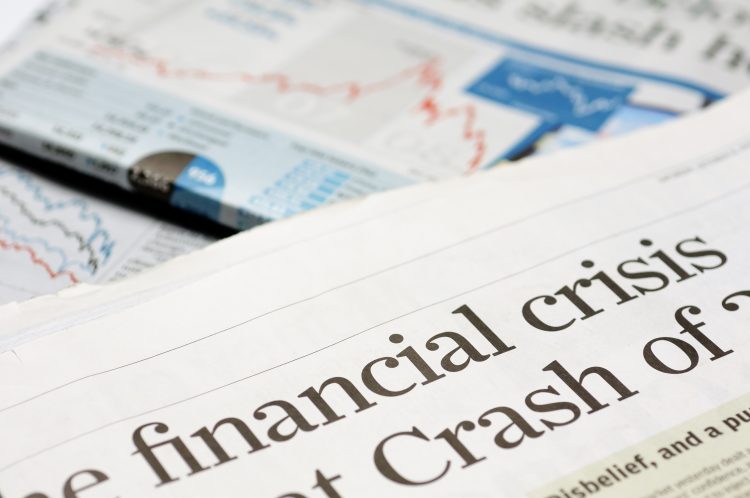Brittany Almquist Lewis, assistant professor of finance at Olin, recently investigated part of the global financial crisis of 2008-2009.

Her focus: independent mortgage companies, which operated outside the commercial banking sector. (Such companies made up a third of the mortgage lending market before the financial crisis and have grown to 50% of the market post-crisis.)
Unlike banks, these mortgage companies didn’t take deposits. They didn’t get insurance. They weren’t regulated. But, as Lewis said, they could do “risky things.” And they did.
The mortgage companies relied on credit-line funding—heavily. Yet, no direct evidence existed about who their funders were or how they operated, Lewis said.
“These questions have important implications for financial stability—not only for the housing market but also for commercial real estate and collateralized loan obligations.”
House of cards
Lewis hand-collected data on 12 of the largest public independent mortgage companies’ credit lines between 2004 and 2006. She established the following:
- The credit lines were collateralized by mortgage loans;
- The credit lines took the form of master repurchase agreements (contracts defining the purchase and resale of collateral) or “repos.”
- The credit lines were funded by the largest, interconnected dealer-banks, such as Credit Suisse, UBS, Lehman Brothers and Bear Stearns, to name a few.
Lewis also collected data on the value of collateral that dealers reported was eligible for reuse.
By connecting a dealer’s collateral to the same dealer’s funding, she was able to causally link dealers’ increased credit supply to an act that Congress passed in April 2005: the Bankruptcy Abuse Prevention and Consumer Protection Act (BAPCPA). She then used mortgage-origination data to analyze the resulting impact on households. Her research resulted in the paper “Creditor Rights, Collateral Reuse, and Credit Supply,” accepted at the Journal of Financial Economics.
“They are all dependent on each other. As soon as one link broke, all the links would break.”
Brittany Almquist Lewis
As it turned out, Lewis discovered that BAPCPA, which changed the bankruptcy process for mortgage collateral before the financial crisis, contributed to the housing boom—and the bust.
BAPCPA granted special treatment for repo trading using mortgage collateral.
The change allowed mortgage dealers to overleverage assets—and allowed them to take on more debt backed by those mortgages, Lewis found.
In addition, her research found “an increase in the re-use of these assets, meaning that two dealers could have money extended with the same mortgage assets backing both trades,” she said.
Think of it as doubling the leverage of what’s recorded on the dealers’ balance sheets.
Plus, Lewis learned, the BAPCPA policy change led to the decline of the underlying assets themselves: The quality of the mortgages was deteriorating.
Hence, fragile mortgages ultimately backed the interlocking trades of large dealer banks.
“If one of these trades fell, it would be like a house of cards,” Lewis said. “They are all dependent on each other. As soon as one link broke, all the links would break.”
The situation “was setting up a perfect storm.”
Silicon Valley Bank
Why is this relevant today?
“None of these things are at play in the financial sector right now,” Lewis said. After the financial crisis, the Federal Reserve brought dealer-banks under bank holding status, making them part of the regulated banking sector. “Now they’re actually banks.”
In addition, “they don’t have these interlocking repo chains that are all backed by the same mortgage assets. And the assets themselves are not deteriorating in quality.”
Silicon Valley Bank’s collapse in March after a run on deposits was not the subject of Lewis’ paper. But her research, she said, does give an argument for why US taxpayers should not bail it out.
“We have a totally different environment with the run on SVB than we did during the financial crisis,” she said.
“Some banks, yes, are going to be connected to it, but they’re not the largest banks. They’re not the 12 most systemically important banks in the United States.”
In the global financial crisis, the interlocking banks were the most financially important, including Lehman Brothers, Bear Stearns, Goldman Sachs, Bank of America, Credit Suisse, UBS and others, all with close to a trillion dollars and more in assets, Lewis noted.
SVB didn’t have anywhere close to those assets. Yes, it had uninsured deposits, and tech firms ran on those deposits, Lewis said.
“But the tech firms themselves aren’t necessarily failing, and they aren’t backed by other banks, and the banks aren’t trading debt that was repackaged and then resold to really large, systemically important banks,” she said.
“These houses of cards are not stacked in the same way that they were stacked before the financial crisis.”



